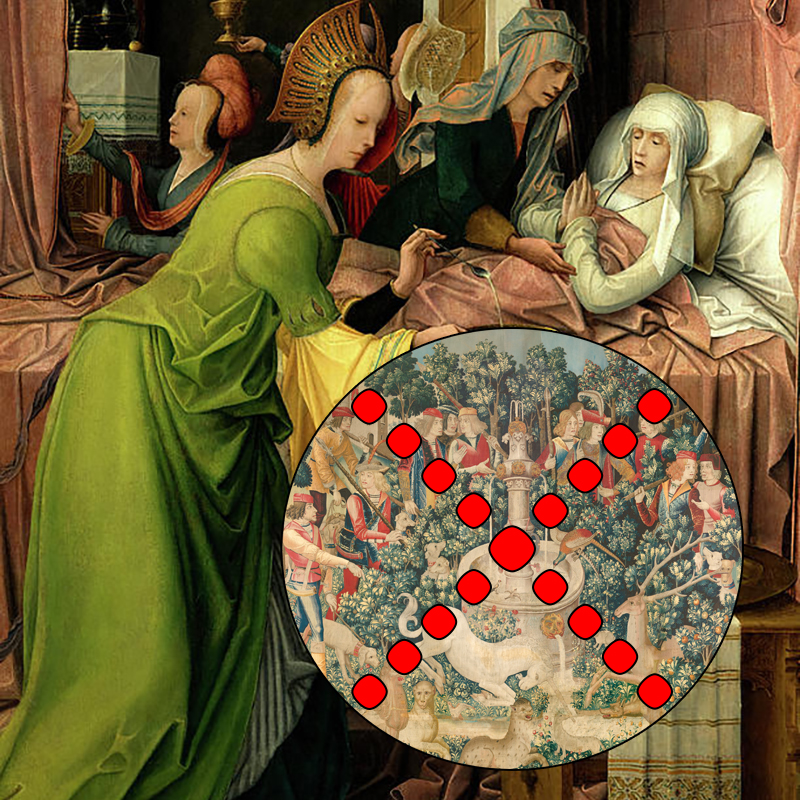[post_page_title]Lying-in was also supposed to induce the birth of male heirs[/post_page_title]
Unsurprisingly, medieval beliefs about the female reproductive process were, well, medieval. The lying-in room was decorated with supposedly calming tapestries of religious scenes and landscapes, meant to put both mother and unborn baby at ease. Images of people or animals, it was believed, might trigger visions that could lead to deformities.

Symbolic barriers to the womb opening would also be undone, especially if labor was proving difficult – cupboards would be opened and knots untied, for instance. It was also believed that the baby’s gender was determined just before the birth, and that the mother-to-be’s imagination could influence it. Royals were therefore encouraged to think about baby boys.










